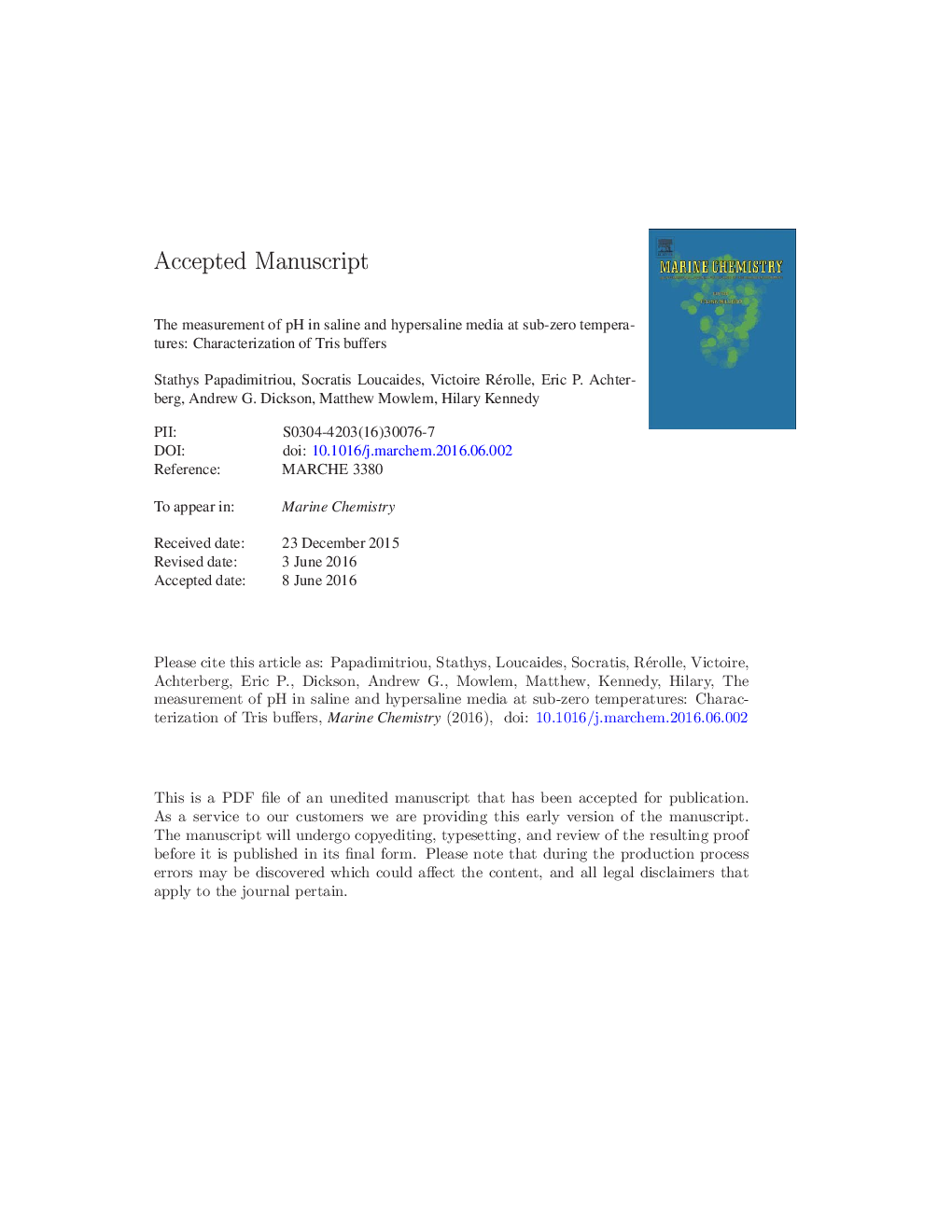| Article ID | Journal | Published Year | Pages | File Type |
|---|---|---|---|---|
| 7699117 | Marine Chemistry | 2016 | 37 Pages |
Abstract
The pH on the total proton scale of the Tris-HCl buffer system (pHTris) was characterized rigorously with the electrochemical Harned cell in salinity (S) 35 synthetic seawater and S = 45-100 synthetic seawater-derived brines at 25 and 0 °C, as well as at the freezing point of the synthetic solutions (â1.93 °C at S = 35 to â6 °C at S = 100). The electrochemical characterization of the common equimolal Tris buffer [RTris = mTris/mTrisâH+ = 1.0, with mTris = mTrisâH+ = 0.04 mol kgH2Oâ1 = molality of the conjugate acid-base pair of 2-amino-2-hydroxymethyl-1,3-propanediol (Tris)] yielded pHTris values which increased with increasing salinity and decreasing temperature. The electrochemical characterization of a non-equimolal Tris buffer variant (RTris = 0.5, with mTris = 0.02 mol kgH2Oâ1 and mTrisâH+ = 0.04 mol kgH2Oâ1) yielded pHTris values that were consistently less alkaline by 0.3 pH unit than those of the equimolal Tris buffer. This is in agreement with the values derived from the stoichiometric equilibrium of the Tris-H+ dissociation reaction, described by the Henderson - Hasselbalch equation, pHTris = pKTrisâ + logRTris, with pKTrisâ = stoichiometric equilibrium dissociation constant of Tris-H+, equivalent to equimolal pHTris. This consistency allows reliable use of other RTris variants of the Tris-HCl buffer system within the experimental conditions reported here. The results of this study will facilitate the pH measurement in saline and hypersaline systems at below-zero temperatures, such as sea ice brines.
Related Topics
Physical Sciences and Engineering
Chemistry
Chemistry (General)
Authors
Stathys Papadimitriou, Socratis Loucaides, Victoire Rérolle, Eric P. Achterberg, Andrew G. Dickson, Matthew Mowlem, Hilary Kennedy,
